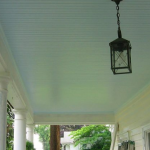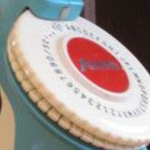Whether you accidentally spilled bleach on your favorite jeans or your white t-shirt has gone yellow, there are tons of ways to minimize bleach stains. Although you can’t remove the bleach stain, you can neutralize the bleach so the fabric won’t tear and lighten or cover the bleach stain with lemon juice or rubbing alcohol. We’ll also give you other ways to cover up the stain using dye or patches and tell you how to avoid bleach stains in the future. Read on for a complete guide to treating bleach stains!
Removing Bleach Stains from Clothes
- Rinse the stain with cold water until the bleach is removed. Apply a paste made of 3 parts baking soda and 1 part water, let it dry, then brush the paste off.
- Rinse the stain again to make sure all the bleach is out. If the garment is white, pour lemon juice on the stain and wash it with cold water.
- If the piece of clothing is black or colored, dip a cotton swab in rubbing alcohol and rub from the edge of the stain inward to transfer the dye to the stain.
Removing Bleach Stains from White Clothes

1. Rinse the item and soak it in lemon juice to remove yellow stains.
Wash the fabric under the water to make sure all the bleach is completely gone. Pour or squeeze pure lemon juice onto the stained area and let it sit in the sun for a day. When you bring it inside, wash it as normal by hand or put it in the washing machine.
- Alternatively, add the garment to 1⁄4 cup (59 mL) lemon juice and 1 gallon (3.8 L) of boiling water, allow it to soak for 1 to 2 hours, then ring it out. Wash as normal by hand or in the washing machine.
- If the yellow stain is still there, repeat this method or try a different method.
- Lemon juice contains ascorbic acid, which can neutralize all residual bleach and remove any yellow staining.

- Hydrogen peroxide can help remove yellow stains and restore the fabric’s white color.
- If the bleach stain is still there, use a bleach remover designed for white fabrics. Follow the instructions, and test it on a small, inconspicuous area first before applying to the stain.

1. Dip a cotton swab in rubbing alcohol and rub at the stain.
- The bleached area might still be slightly lighter than the other parts of the shirt, but this can help hide the stain.

2. Apply white vinegar or lemon juice and water to the stain if it’s still there.
Rinse the stained area thoroughly with cold water to make sure all the bleach is removed. Spray or dab the shirt with a clean cloth dipped in a mixture of equal parts white distilled vinegar or lemon juice and warm water. Let it sit for a few minutes.
- Alternatively, wash the stain with a couple of drops of dish soap mixed in 1⁄2 gallon (1.9 L) of warm water. Dip a clean cloth in the mixture and scrub the stain from the outer edges to the center.













